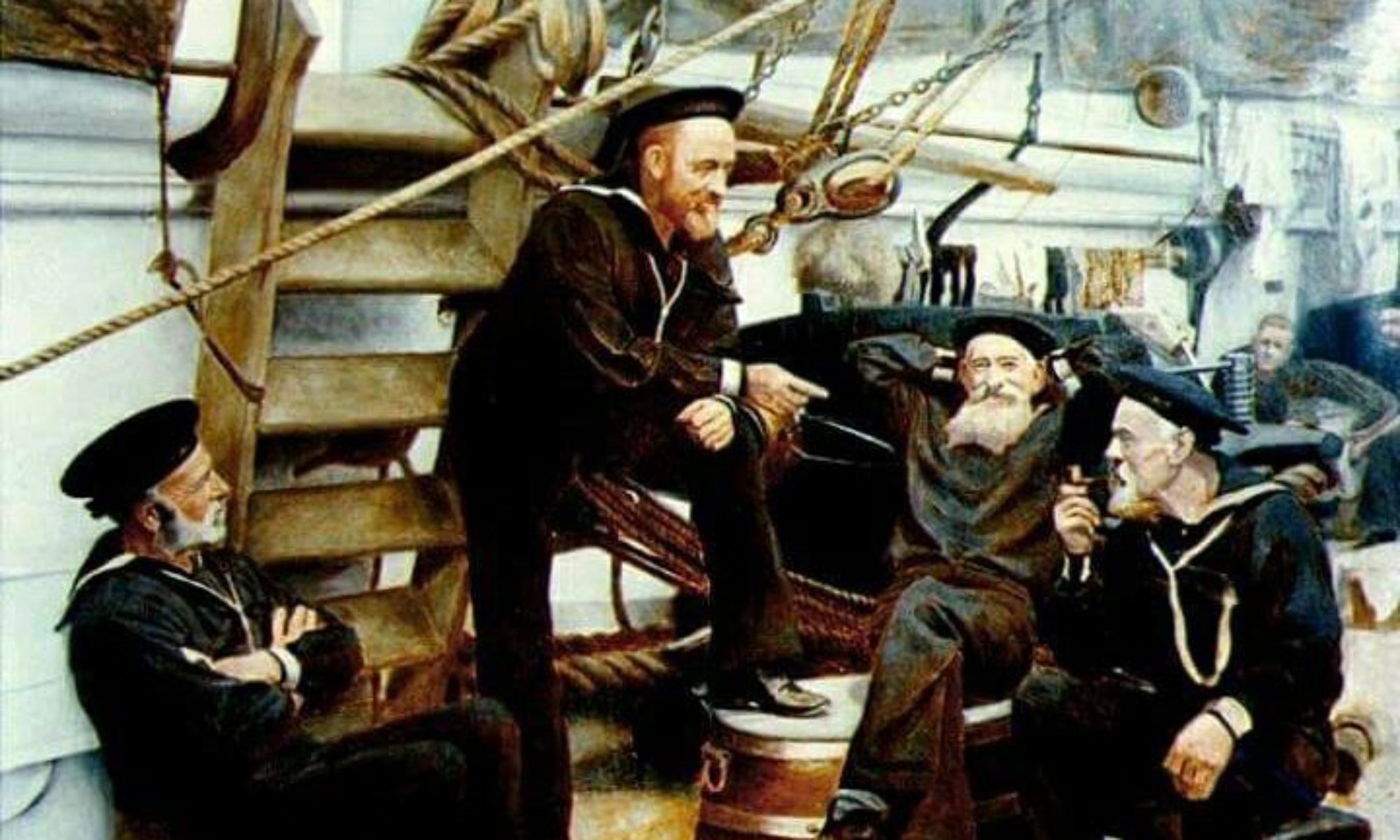Wooden USSB Steamship PEZUTA
The Bow First Launching
On August 28th 1918 Sanderson & Porter Shipyard in Raymond Wa., launched their third ship, hull # 91, named “PEZUTA”. In the official Sanderson & Porter shipyard publication “CHIPS” the following describes the launching:

“Gaily bedecked in the flags of the allied nations and painted the marine gray of the Emergency Fleet, crowded by the patriotic shipbuilders who had reared her step by step from the keel to upper decks, speeded upon her journey by the stirring strains of the National Anthem, the PEZUTA on Wednesday evening, August 28, 1918 glided majestically and beautifully into the waters of the Willapa River. Miss Thora Lerine Stapleton, daughter of William Stapleton, Gantry Foreman of the Sanderson & Porter Yard, broke the sparkling goblet over the prow of the PEZUTA as she moved down the ways.”

After launching, the tugs DARING, STANDARD, MYRTLE, and AGNES maneuvered PEZUTA into berthing in order to finish some of the superstructure. Just like all the other Ferris design #1001, coal fired, three-island ship, (aka tramp ship) PEZUTA construction contained 1.8 million board feet of lumber, 20,000 tree nails, 10,000 pounds of clinch rings, 600 gallons of paint, 400 bales of oakum, 200 tons of round iron, 30 tons of iron strapping, and 2 tons of lead preservatives.
To Eagle Harbor for Steam Engines
On November 21, 1918, PEZUTA under Capt. Charles T. Moritz, was towed out of Raymond and through Willapa Bay by tugs MYRTLE and AGNES to the waiting sea-tug RICHARD HOLYOKE for transfer to Winslow Marine Railroad & Shipbuilding Co., Eagle Harbor, Bainbridge Island, Wa. After some trouble with ground swells at the Willapa Bar and fighting north-east winds in the Straits of Juan de Fuca, PEZUTA arrived at Eagle Harbor November 23, 1918 and remained there until March 1919. Engines were installed despite the end of War back on November 11, 1918 . Radio equipment was most likely installed on the PEZUTA as she received the call letters KPIE, although they were later removed from the registry.
The Oregon Daily Journal reported that PEZUTA was completed and towed from Winslow by the tug TYEE at 6 p.m. March 25, 1919. The destination unknown but most likely PEZUTA was delivered to Hanford Street Terminal in Seattle (pier 25 today) to await Sea Trials and acceptance by the United States Shipping Board (USSB).

100 Percent Complete
December 26, 1919, The Morning Oregonian listed Pezuta as 100% complete but laid up for preparation of the 1920 selling campaign the USSB had devised to eliminate the excess ships and hulls they had acquired. Yet by 1922 PEZUTA was struck from the official Merchant Ship Registry as most likely abandoned.
Heading to Canada
Ownership at this point is difficult to trace. A large number of the wooden “Ferris” ships (now listed as Hulls and Barges) were obtained by the Washington Tug & Barge Co.,(WT&B) who soon joined with Canadian ship builder, John Coughlan, to form the British Pacific Transport Company Ltd. It appears that WT&B was not fully invested into this partnership due to some vessels being listed as owned by WT&B but registered in Canada to British Pacific Barge Co. By July 1925 the men representing WT&B sold out their interest in British Pacific Transport Co., to two other Canadian businessmen. Mr. Coughlan and his new partners joined with Pacific Tug & Barge Ltd., to obtain additional log barges. This multiple partnership venture formed the company British Pacific Log Transport Company Ltd. PEZUTA is shown to be connected with a separate company called British Pacific Barge Co., which is listed as having acquired PEZUTA in 1925 (possibly from WT&B). In May 1926, British Pacific Barge Co., merged with Hecate Straits Towing Company and British Pacific Log Transport Co., and Pacific Tug & Barge Ltd., and with Coyle Towing Company Ltd., to form a new company called Pacific (Coyle) Navigation Company Ltd. So let’s just say that PEZUTA in 1926 is now owned by Pacific (Coyle) Navigation Company Ltd.
Lightering
By 1927 PEZUTA shows up again in the Canadian House of Commons Record showing it needed lightering at the 2nd Narrows Bridge into False Creek, Vancouver B.C. at a cost of Can$2,762.83. No additional information is listed other than it was Misc Item #425 in the 1927 records for the Canadian House of Commons. It is possible the lightering* was needed to empty PEZUTA prior to refitting in Bullard Dry Docks in False Creek. In July 1928, Pacific (Coyle) Navigation Co., has Bullard Dry Docks make modifications installing Donkey Boilers, Winches, and Hoisting Engines into PEZUTA at a cost of Can$25,000. When finished PEZUTA could load herself and carry 800,000 feet of logs.

Shipwreak on Graham Island
Not long after being refitted with the new equipment, PEZUTA starts work barging logs but her work didn’t last long. December 11, 1928, as the steam tug IMBRICARIA was towing PEZUTA during a heavy southeast gale the tow line for PEZUTA broke and she went aground at the mouth of the Tlell River on Graham Island of the Queen Charlotte Islands. She was almost a complete loss. Logs were salvaged by locals and the contract went to the Prince Rupert Salvage & Towing Co. They determined the hull was a total loss and not worth trying to refloat. Three truckloads of machinery was striped and trucked to Port Clements and a scow load of fittings were towed to Prince Rupert by the Salvage Princess. The remainder of the wreck remained high on the beach to be pounded by the waves and broken up over the years.

Renamed PESUTA
Somewhere in Graham Island history the wreck PEZUTA became known as PESUTA. (It’s not uncommon historically to find Z’s read as S’s) and today you can still visit this wreck but only as PESUTA in Haida Gwaii (previously known as Queen Charlotte Islands) as part of the Naikoon Provincial Park and The PESUTA Shipwreck Trail.

